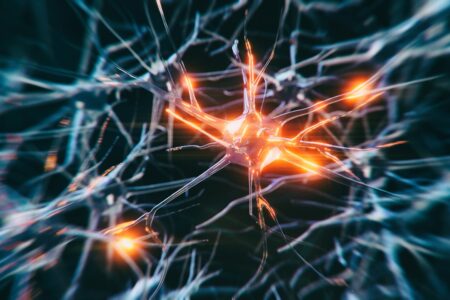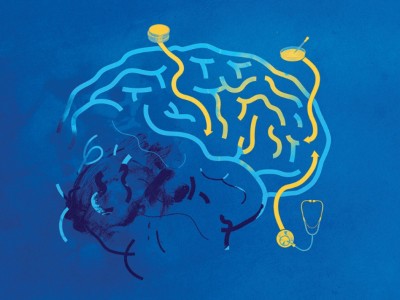Vitamin D supplements may help improve blood pressure, cholesterol, and insulin
A recent meta-analysis found that a daily average of 3,320 IU of supplemental vitamin D is linked to lower levels of hemoglobin A1C, total cholesterol, blood pressure, fasting blood glucose, and insulin. The conclusion is based on a recent meta-analysis of 99 international randomized controlled trials that looked into the advantages of vitamin D for cardiometabolic health. The meta-analysis makes an effort to clarify and summarize the results of occasionally contradictory studies on vitamin D.
A fresh perspective on the importance of vitamin D supplementation in preserving cardiometabolic health is extracted from a recent, thorough review of the body of existing, frequently contradictory, research on the subject. A median daily intake of 3,320 International Units (IU) of vitamin D, or about 83 micrograms, was linked to some noteworthy cardiometabolic advantages, according to the meta-study’s authors. Among these advantages were decreases in insulin, fasting blood glucose, hemoglobin A1C, a sign of type 2 diabetes, systolic and diastolic blood pressure, and total cholesterol.
Researchers from the United States and China analyzed data from 99 RCTs (randomized, controlled trials) that were released up until March 26, 2024. 17,656 people took part in the trials, which were conducted in a variety of global locations with widely disparate populations. A crucial element of the meta-analysis involved enumerating the variations among the RCTs that could potentially account for the disparities in their findings. The authors of the meta-study were able to reassess and compare the RTCs’ data more fairly and comparably after those differences were recognized.
Conflicts had less of an impact on the final conclusions, and a few unique cases about particular populations surfaced. The groups that benefited most from vitamin D supplementation, according to the researchers, were non-Westerners, those with lower blood levels of the nutrient, those with a BMI under 30, and those 50 years of age and above.
Why previous findings on vitamin D have been inconsistent
Professor of epidemiology, surgery, and medicine at Brown University in Providence, Rhode Island, Simin Liu, MD, ScD, the corresponding author of the meta-study, outlined some of the ways that the RCTs varied from one another and led to differing conclusions. According to him, some primary causes of heterogeneity in past research that produced contradictory results about supplementation and cardiometabolic risk factors included age, body weight, ethnic background, and the circulating 25[OH]D levels of study participants at enrollment.
The amount of vitamin D, specifically in the form of 25[OH]D, present in one’s bloodstream serves as the most dependable measure of the body’s entire vitamin D reserve, encompassing both naturally produced vitamin D from the skin and vitamin D obtained through dietary supplements. (Citing Trusted Source) Dr. Jayne Morgan, a cardiologist and the Executive Director of Health and Community Education at the Piedmont Healthcare Corporation in Atlanta, GA, who was not associated with the meta-study, pointed out another factor contributing to the medical community’s less than complete confidence in vitamin D.
Although numerous studies show a connection between vitamin D supplementation and a decreased risk of heart disease, a clear cause-and-effect relationship is still missing. Furthermore, it is still unknown if low serum vitamin D levels are a cause or contributing factor to heart disease, or if they are a result of heart disease itself. Low serum vitamin D levels are linked to an increased risk of cardiovascular disease.
However, the data is leaning in this direction, and as of right now, there is no conclusive information on cardiovascular endpoints. According to Morgan, although the data does not meet the criteria for evidence-based information, it does meet the criteria for evidence-informed information. Benefits include improved muscle function, decreased inflammation, and bone health. She went on to say that it may have beneficial effects on lipids, diabetes, and hypertension.
Some benefit more, some need more vitamin D
According to Liu, non-Westerners are more likely to benefit from vitamin D supplementation because they have comparatively lower circulating vitamin D levels. Similarly, serum vitamin D levels tend to decline with age, which could account for the greater cardiometabolic improving effect of vitamin D supplementation seen in individuals 50 years of age and older, he continued. This also applies to those with BMIs under 30 kg. According to Morgan, all of this suggests that the catch-up might be a crucial component of the puzzle.
Individuals with initial vitamin D levels that were not low, and who only managed to increase these levels, had a lesser impact and moved the scale less than those who significantly elevated their vitamin D levels due to their initially low levels. They demonstrated a more substantial shift, as she put it.
A personalized approach to vitamin D
According to Liu, there is undoubtedly validity to the adage One size does not fit all, even in light of the positive associations found for 3,320 IU of vitamin D per day for many individuals and the ethnographic differences noted in the meta-study. Careful assessment of each person’s ethnocultural background and biological features would be necessary to implement personalized intervention strategies to achieve optimal levels of vitamin D for cardiometabolic health, according to Liu.
He pointed out that those with obesity and low 25 OHD levels would probably require higher doses of vitamin D and longer durations of treatment, based on the findings of the meta-study. According to Liu, we might have to investigate the effects of longer intervention periods and higher vitamin D doses on cardiometabolic health outcomes in different populations. These variables include age, body weight, ethnic background, and the circulating 25 OHD levels of study participants at the time of enrollment.
Medications that have been suggested by doctors worldwide are available here
https://mygenericpharmacy.com/index.php?generic=587








